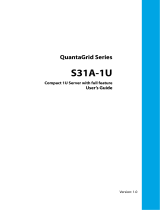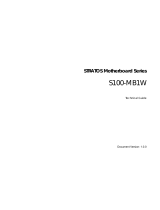
1
Table of Contents
Using Your Gigabyte Content Management System Console ........................................................... 2
Gigabyte Content Management System Key Features and Functions .............................................. 3
Using the Web UI .............................................................................................................................. 4
Gigabyte Content Management System Console Overview ............................................................. 5
Enter Gigabyte Content Management System Console .................................................................... 6
Properties .................................................................................................................................. 6
Configuration ............................................................................................................................ 7
Network ............................................................................................................................. 7
Network Security ...................................................................................................................... 8
Users ................................................................................................................................. 9
Services ........................................................................................................................... 10
IPMI ................................................................................................................................ 11
Time Setting .................................................................................................................... 13
Sessions ................................................................................................................................... 14
LDAP ...................................................................................................................................... 15
Updates ................................................................................................................................... 16
Utilities .................................................................................................................................... 17
Server Information .................................................................................................................. 18
Power Control ................................................................................................................. 18
Voltages ........................................................................................................................... 19
Thermal ................................................................................................................................... 20
Fans ................................................................................................................................. 20
Temperature .................................................................................................................... 21
System Event Log ................................................................................................................... 22
Event Management ................................................................................................................. 23
Platform Event ................................................................................................................ 23
Trap Settings ................................................................................................................... 24
Email Settings ................................................................................................................. 25
Serial Over LAN ..................................................................................................................... 26
Remote Console ...................................................................................................................... 27
Console Redirection ........................................................................................................ 27
Console Redirection Configuration ................................................................................. 29





















